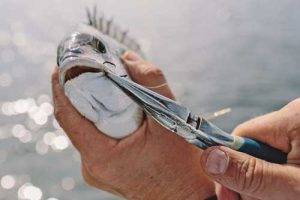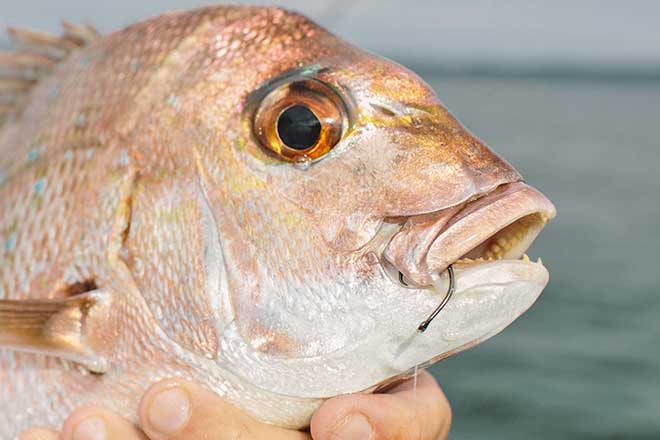Circle hooks are widely known as the No.1 choice for game fishermen targeting billfish on live baits or skip baits.
These strange looking, inward turned hooks are designed to pin fish in the corner of the mouth, ensuring a solid hook hold and a healthy release.
However, circles aren’t just about catch and release fishing for gamefish – they are also a fantastic option when using bait for a range of popular species including bream, whiting, snapper, golden perch, flathead, mulloway and kingfish.
This unique hook not only can give you a better hook up and landing rate, but also allows for better catch and release fishing with increased survival of your targeted species – this is because the design of these hooks results in a greater proportion of fish being hooked in the mouth (rather than deep in the throat). It also benefits the survival of any bycatch including undersized fish.
It’s important to remember that to be successful using circle hooks you need to make some key changes to your normal fishing practices. This includes ensuring that your hook is well exposed, rather than buried in your bait and not to strike when you get a bite!
Many studies have shown that one of the most influential factors affecting the survival of fish released by anglers relates to where the fish was hooked. Specifically, survival has been shown to be greatly reduced for fish that are deeply hooked in the throat or beyond.
What is a circle hook?
![]()
A circle hook is a fishing hook manufactured so that the point is turned perpendicularly back to the hook shank to form a generally circular, or oval, shape.
Various studies have shown that circle hooks mouth-hook a greater proportion of fish than typical “J” pattern hooks.
Benefits of circle hooks
- Reduced deep hooking – improved survival of released fish and decreased loss of fishing tackle
- Improved hook-up and landing rates for many species
- The strike time is not as crucial for hook-up of fish
- Lighter leaders/traces can be used as the line is generally away from abrasive mouth surfaces
- Additionally, some studies have shown that using circle hooks may reduce the incidence of snagging.
Circle hooks bring about many benefits for anglers, but they do require a few minor changes to your normal fishing techniques.
How to use circle hooks
- Do not bury your hook (particularly with tough baits), lightly hook the bait so that the point and barb are exposed or “bridle” the bait
- Do not strike at the fish, allow the fish time to take the bait into its mouth and then apply slow and steady pressure to set the hook in the mouth area. The fish often hook themselves
- Non-offset circle hooks are recommended for the best mouth-hooking results
- Use a de-hooker or needle-nosed pliers to help with unhooking.

Occasionally some fish will still be deep hooked. To maximise survival it is best to cut the line and release these fish with the hook still intact rather than attempt to remove it.
Float rigs, short leaders and keeping your line tight may also increase the number of fish that are hooked in the mouth.
For more information visit dpi.nsw.gov.au
 Bush ‘n Beach Fishing Magazine Location reports & tips for fishing, boating, camping, kayaking, 4WDing in Queensland and Northern NSW
Bush ‘n Beach Fishing Magazine Location reports & tips for fishing, boating, camping, kayaking, 4WDing in Queensland and Northern NSW









